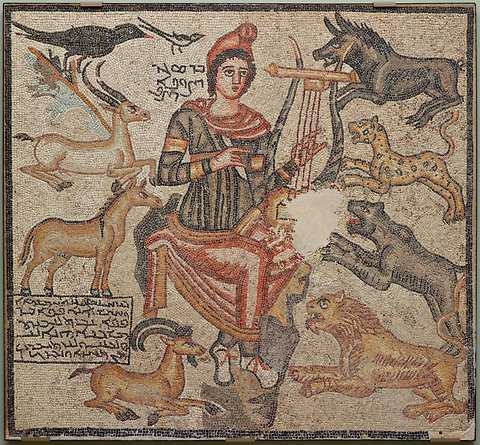
Dallas Museum Volunteers to Return Mosaic to Turkey
By RANDY KENNEDY
The mosaic is to be returned to Turkey.Dallas Museum of Art The mosaic is to be returned to Turkey.
The Dallas Museum of Art voluntarily returned an ancient marble mosaic in its collection to Turkey on Monday, after determining that the work — which dates from A.D. 194 and shows Orpheus taming animals with his lyre — was probably stolen years ago from a Turkish archaeological site.
The decision, part of a new plan by the museum to court exchange agreements with foreign institutions more actively, comes at a time when the Turkish government has become more aggressive in seeking antiquities it believes were looted from its soil. In recent months it has pressed the Metropolitan Museum of Art and several other museums around the world to return objects and, to increase its leverage, it has refused loan requests to some.
The Met says that the objects sought by Turkey were legally acquired in the European antiquities market in the 1960s before being donated to the museum in 1989.
Other museums have accused Turkey of undue intimidation. Last year the Pergamon Museum in Berlin returned a 3,000-year-old sphinx, which Turkey said had been taken to Germany for restoration in 1917. But German officials say Turkey has continued to deny loans of objects for exhibitions because of claims to other objects in the Pergamon collection.
The Dallas mosaic, bought at auction at Christie’s in 1999 for $85,000, is thought to have once decorated the floor of a Roman building near Edessa, in what is now the area around the city of Sanliurfa in southeastern Turkey. Edessa developed alliances with Rome from the time of Pompey and was sacked under the rule of the emperor Trajan.
Maxwell L. Anderson, the director of the museum in Dallas, said that when he took over at the beginning of 2012, he asked antiquities curators to identify objects that might have provenance problems.
“What I didn’t want to happen here was a succession of slow-motion claims coming at us,” he said in an interview. As part of the review, the museum has also transferred legal ownership of several objects to Italy, including a pair of Etruscan shields and three kraters, or earthenware vessels used to mix wine and water.
Turkish officials had been searching for the Orpheus mosaic for some time, Mr. Anderson said. “For whatever reason, they hadn’t found their way to the Christie’s catalog or to us,” he said.
When the museum contacted Turkey earlier this year to say that it had doubts about the mosaic, whose existence seems not to have been cited in publications before its inclusion in the Christie’s catalog, Turkish officials provided photographs of a looted site near Edessa whose physical characteristics closely matched those of the mosaic.
“I saw that, and even as a novice, I said: ‘Done,’ ” Mr. Anderson said.
Cemalettin Aydin, the consul general of Turkey in Houston, who along with other Turkish officials took possession of the mosaic at a ceremony in Dallas on Monday morning, said in prepared remarks that he applauded the museum’s “unwavering ethical stance.” He added that the restitution would lead to an active loan arrangement between Turkey and the Dallas museum. The museum has no Anatolian collection to speak of, and so the hope is that the agreement with Turkey will allow Dallas to organize ambitious exhibitions of work lent from that region.
The return of the mosaic is the first official act of the museum’s new international loan initiative, called DMX, which seeks agreements with foreign museums to share objects and to collaborate on conservation projects, exhibitions and educational programs.
A version of this article appeared in print on 12/04/2012, on page C1 of the NewYork edition with the headline: Dallas Museum Returns Art to Turkey.
via Dallas Museum Volunteers to Return Mosaic to Turkey – NYTimes.com.

Leave a Reply